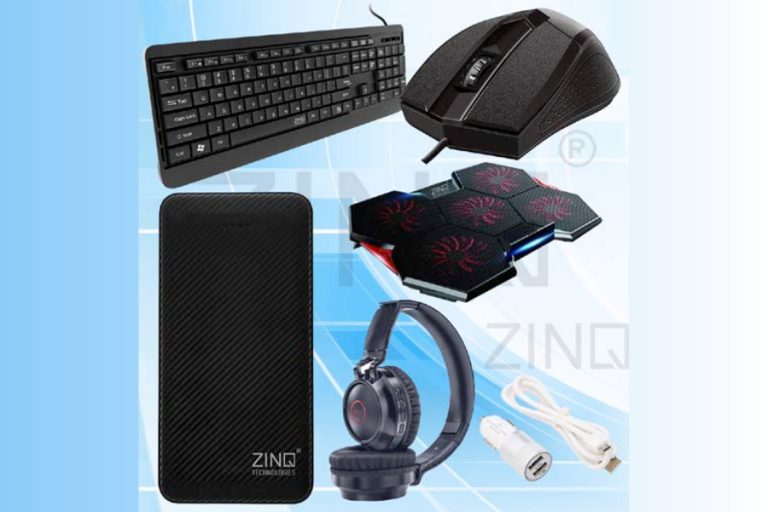ZinQ Technologies, an Amazon-exclusive brand, has made a name for itself in lifestyle gadgets and accessories in a very short span of time. Incepted in 2019, ZinQ is a brainchild of Quantum Hitech Merchandising, one of the leading and widely acknowledged computer and gaming peripherals, sound systems and surveillance solutions brand. It claims to sell over 75,000 units per month with 2,500 units sold every day. The company has established a customer base of over 10 lakh and is targeting to scale up the figures to 5 lakh new customers a month by the end of 2021. Arnav Mutneja, Founder, ZinQ Technologies, shares with Ramesh Kumar Raja the brand’s vision and strategy to strengthen its foothold in India furthermore and then enter the Middle East and Europe in the near future. Excerpts:
ZinQ is a relatively new player in the digital accessories segment. How are you positioning it in India which already is a hyper-competitive market having innumerable brands at different price points?
Our hypothesis was to listen to the consumer and to address their needs. By paying heed to millions of customers’ reviews online, we are able to learn what other brands did not want to learn. That has helped us to get insights into what consumers actually want and what features they are willing to sacrifice for ease of use. Hence, the products that we come up with are born out of a very minimal yet functional approach. They are designed to make one’s daily life easy and stress-free.
We had an enthralling journey in lifestyle gadgets and accessories launched in the past year. Considering that India is a price-sensitive market, our products strike a perfect balance between features and performance.
You have a very limited number of product categories to offer. How has been the response so far and what’s your expansion plan to make ZinQ large?
All of our sales are coming from one of India’s leading e-commerce channels, Amazon.in. We sell over 75,000 units per month with 2,500 units sold every day. We have established a customer base of over 10 lakh and are targeting to scale up the figures to 5 lakh new customers a month by the end of 2021.
In terms of business, we are eyeing to clock revenue of around 40 crore in the next year. Having completed a year of selling consumer electronic goods, we have clocked INR 15 Cr revenue in FY 20-21 in domestic sales alone. The industry we are focusing on now is consumer audio space. We are planning to launch a series of Bluetooth speakers, neckbands, headphones and true wireless earbuds. We are also planning to embark on the smart home appliances and lighting category in the immediate future.
As a startup, we are overwhelmed to have flourished faster than we had anticipated. We want to strengthen our foothold in India furthermore and then enter the Middle East and Europe by 2021.

ZinQ is an Amazon-exclusive brand. Do you have any plans to onboard another platform?
We have no plans to sell through any other channels. It is a symbiotic relationship we share with Amazon and we plan to continue it.
How has the business been so far, especially in the wake of pandemic when living digital life has become a new norm from kids to adults?
The current year has been very grueling for everyone. After completing a year since our inception, the unfortunate COVID-19 pandemic happened. Logistics was badly hit and supply chains were disrupted. Exorbitant sums of money got blocked by vendors, inventory in transit, etc. Timing is very essential for any business to succeed, and for us, right when we were scaling up and investing heavily, we had to come to a complete halt, that too a knee jerk. Travel restrictions around these times have become huge hurdles. Product development from other countries over video calls is extremely difficult and time-consuming. Global shortages in IT products have also resulted in global suppliers focusing on higher-paying US and European markets rather than India. Overall, we have been lucky to have sustained the worst and now with supply in the process of rectification, we stand a chance to grow exponentially.
| “After completing a year since our inception, the unfortunate COVID-19 pandemic happened. Logistics was badly hit and supply chains were disrupted. Exorbitant sums of money got blocked by vendors, inventory in transit, etc. Timing is very essential for any business to succeed, and for us, right when we were scaling up and investing heavily, we had to come to a complete halt, that too a knee jerk” |
Which are the areas you are targeting and whom do you consider your potential buyers?
The brand is crafted for youth and tech savvy audiences committed to deliver the best-in-class experience to its customers.
What is your approach to the “after sales service” which remains an issue for the majority of electronics companies?
After sales support is the backbone of any brand. We have strategic tie up with service providers which give our consumers over 600 touch points spread all over the county. We strive to provide a hassle-free service experience to the consumer.
What do you do to increase the recall value of your brand?
We believe that in the long run, nothing speaks for a brand more than its loyal customer base. We believe in a no-compromise approach to quality and make products that last a lifetime. It is a legacy we want to create of a homegrown household electronics accessories brand with unmatched quality.
There is a parallel grey market in India thriving on counterfeit accessories and devices. How will you deal with them?
Fortunately, being exclusive to Amazon, we do not face competition from the grey market and we carefully come up with products that do not have easily available alternatives in the grey market.
What are your outreach and investment plans?
We have invested Rs 5-6 crores till now. We have gained access to capital investment through our parent company Quantum Hi-Tech Merchandising. In order to grow further, we do not see funding as an issue. We are looking at investors from a strategic point of view more than monetary.
Please tell us something about R&D and innovation at ZinQ?
We have a dedicated department for design where we make sure that every product is designed internally to the optimal performance levels. We outsource certain parts of the manufacturing process but make sure that our products and key designs remain our property. Right now, we have over 35 products under development by our R&D team and more than 15 are nearing production.



